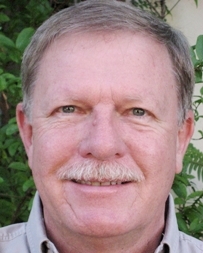
Rhodes University Geological Society was privileged to host an insightful and unique seminar on the breathtaking landscape of the geologically intriguing Okavango delta by Terence McCarthy, a Professor of Mineral Geochemistry at the University of the Witwatersrand’s School of Geosciences, last week.
Alex du Toit, in whose honourable memory the talk was held, was a crucial scientific thinker of his generation. His remarkable contributions to our knowledge of the world encompassed diverse disciplines and his theories on the geology of Southern Africa endure as vital landmarks in our current understanding of the colossal forces which shape our subcontinent.
Du Toit travelled to the delta, which is the largest in Africa, in 1925. There he spent five months with a team of surveyors performing groundbreaking fieldwork, including what was possibly the earliest example of vertical aerial photography. This comprehensive research led to Du Toit’s profound observations on the geology of the delta, many of which hold sway to this day.
The talk, entitled The Okavango Delta and its place in the geomorphologic evolution of Southern Africa, transported its audience back through eons of geological time and provided a thorough understanding of how our beloved Southern African landscape was forged. After detailing the formation of the subcontinent as a whole, Prof McCarthy proceeded to educate his audience on one of its most prominent geological features, the scenic and fascinating Okavango delta.
The story begins with the break-up of Gondwanaland driven by rising mantle plumes. These colossal plumes created the high terrain and the rifts that gave birth to the drainage systems on which countless generations of Southern Africans have relied for fresh water. By 90 million years ago the coastline of Southern Africa as we know it today had already been formed.
The Okavango Delta, which was formed 30 million years ago by tectonic uplift, experiences seasonal flooding which can now be accurately predicted. The legendary Okavango River is a labyrinthine network of channels, lagoons and islands which never actually reaches the sea but rather blesses the sweltering Kalahari with its much-needed moisture.
The Kalahari desert is the world’s largest sand body, a fact which was first observed by the astute Mr Du Toit without the advantages of modern scientific technology. Prof McCarthy describes these channels as the arteries of the delta. The famous tree-less islands are metaphorically called the kidneys of the delta, because of their vital role as absorbers of insoluble toxic salts.
Picture: Prof Terence McCarthy.
Pic source: Wits website.
